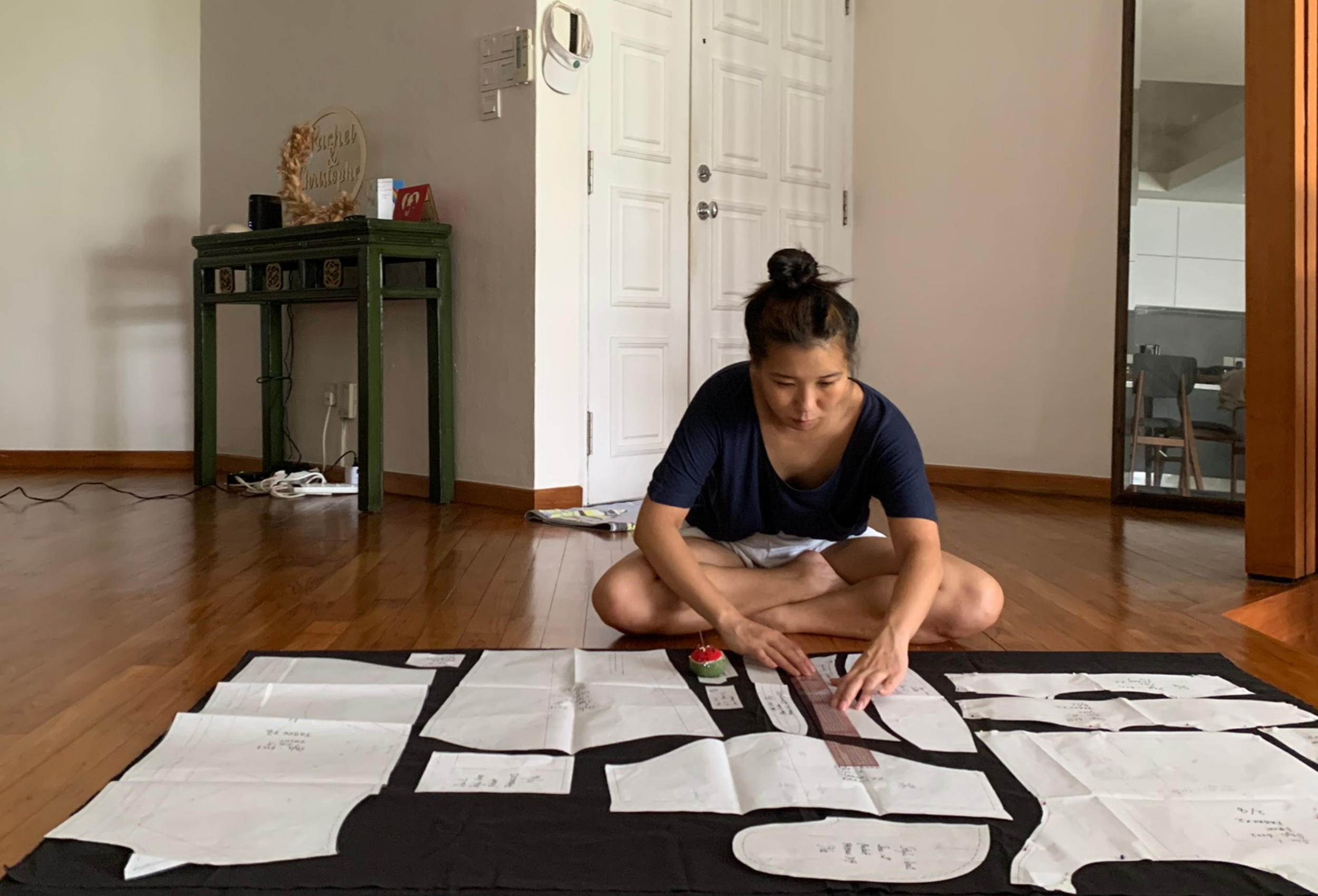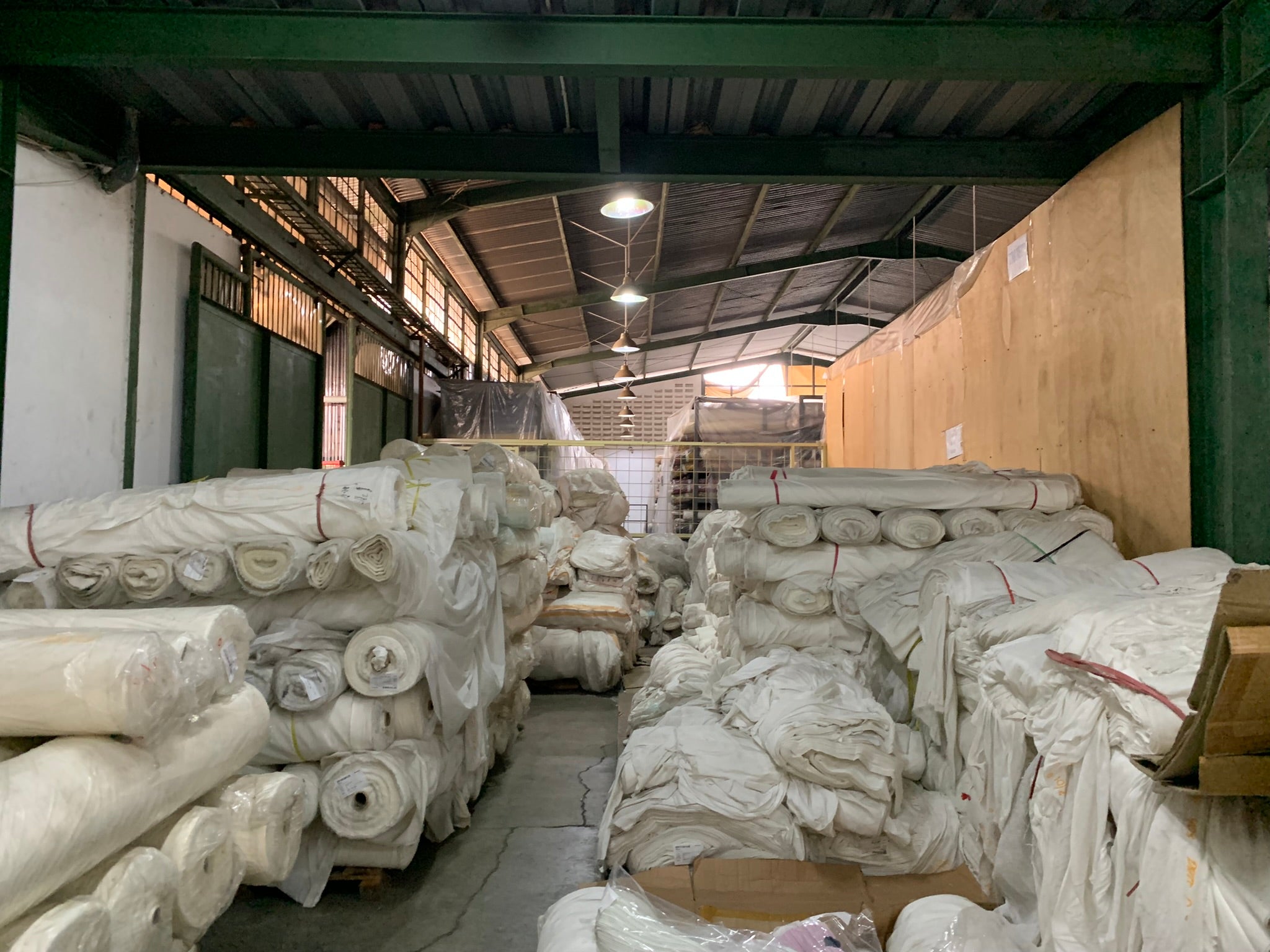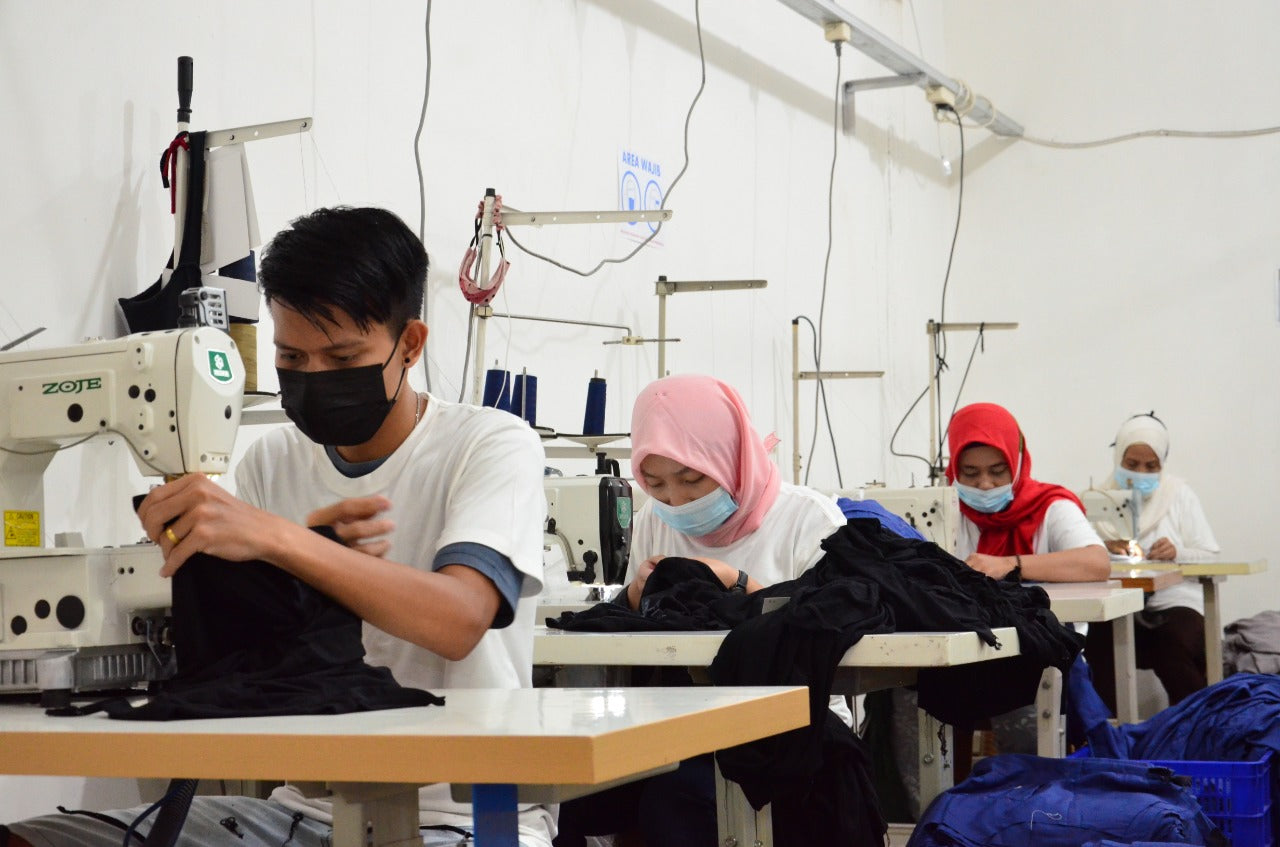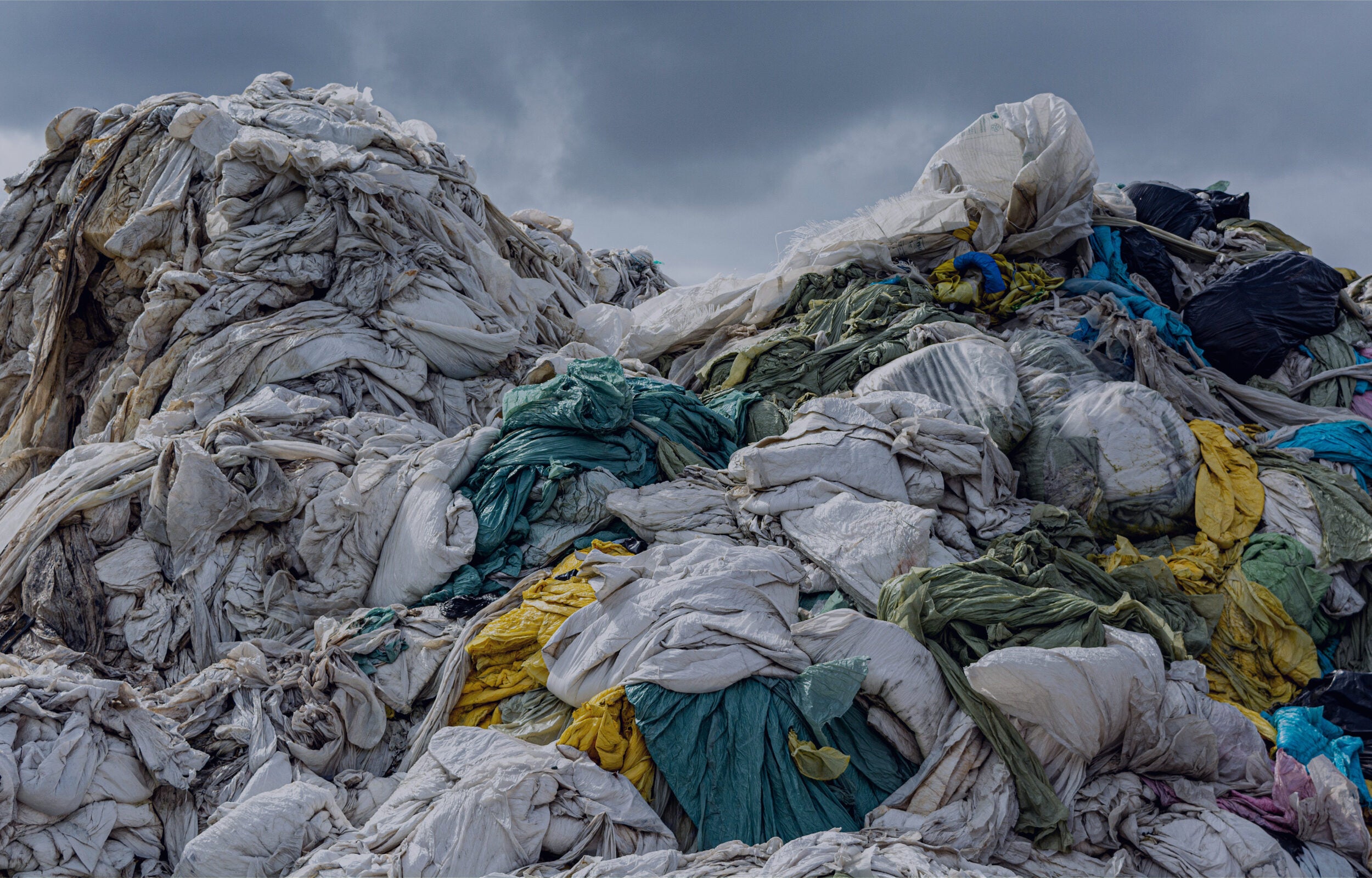GREEN TRANSITION FOR FASHION - SUSTAINABLE CLOTHING IN SINGAPORE
Affordable, sustainable clothing designed in Singapore for the eco-conscious and fashion-forward.
WHY DOES IT MATTER?
Fashion is important, not just in an artistic and creative sense, but practically speaking, it clothes us and provides protection in our daily lives. It also breathes life into our visual personalities and armors us with confidence when perhaps we needed a little help. Undoubtedly, it is a key ingredient to our quality of life.
However, would you say it's up there in the top 3 life requirements? Let's look at the current facts. The fashion industry is in the top 3 most polluting industries in the world for carbon emissions and greenhouse gases, after #1 fossil fuels (Energy) and #2 agriculture (Food). Does it really make sense that Clothes is next, more so than Transport and Construction? Our consumption of fashion today has accelerated at such a rate (thanks to fast fashion doubling it's production since 2000) it has disrupted the equilibriums of nature, raw materials, pollution, waste, and socioeconomic well-being.
We live on a finite planet, yet act as if resources are infinite. If we start now, collective action to live within planetary boundaries can halt environmental collapse, and pave way to better, stable, fair, and modern lives. At Rock Daisy, every action or business decision we've taken is with this crisis in mind.

Design
You might ask, how did fast fashion manage to double its production since 2000? By prioritizing quick volumes and low-cost production, which results in clothing being made with poor quality, often times coming apart after a few washes. Their entire business strategy is infamously built on copying the latest trends and releasing daily/weekly drops of product at low prices. Brands like SHEIN take it to the extreme level dropping 10,000 new products per day. How can any real design and construction quality exist at this speed?
STEP 1: Design for durability and timelessness, with construction techniques that withstand repeated use. In developing each of our EDITIONS, alongside our Japanese-trained patternmaker, we designed silhouettes favoring more classic and utilitarian styles, yet modernized for that edge and cool factor. We thoughtfully considered how the pieces could be constructed in a way that extends the lifespan of the garment, such double stitch lines of flat-felled and french seams, so that side seams are stronger, topstitching on shoulder and pocket lines to reinforce areas with high movement, and bias-bound edges inside garments to protect raw edges and threads from coming apart. This is our design ethos and we will continue to create within these principles so that we can provide a better and longer-lasting option to the fast fashion model.

Textile
Polyester is fossil fuels, no way around it. It is made from synthetic fibers, created by melting PET plastic pellets (read: burning fossil fuels) emitting harmful chemicals into our atmosphere by shedding microplastics and microfibers every time it is produced, washed, or even worn. In this respect, plastics are not even made to be recycled, as they continue to shed toxic components even in its reuse. Why does this matter? These plastics have infiltrated everything around us, in our oceans, our fish, our rain. They carry disease-creating bacteria, and its toxicity compromises our health with endocrine-disruptors, leading to impacted hormone development, Type 2 diabetes, and obesity. Realistically, we don't even know what actually happens to this material at end-of-life, because it has only existed since the 20th century and we're still waiting for it to decompose, which could be anywhere between 400 to 1000 years. Despite this, the fashion industry has recklessly allowed polyester to now represent 52% of all textile fibers, according to the UNCC Fashion Charter.
STEP 2: rid or reduce our reliance on polyester. All of Rock Daisy's fabrics are made from 100% natural fibers, with Lenzing TENCEL™ certification on majority the line list (certificate upon request). Read here for more info on the sustainable properties of TENCEL™. Natural fibers are a renewable resource that can be reused, recycled, and easily decompose at end-of-life. While our buttons are made from natural shell, and we've avoided using elastics and plastic casings in design, we do acknowledge that our YKK zipper tape & labels are still at this time woven from synthetic fibers.
Starting in EDITION3 (FW25), our collection also includes 100% natural fabrics sourced from Tokushima, Japan and Xinjiang, China. We broadened our source in efforts to find the best natural fibers, enduring strength, and quality retention, though never compromising on our promise of a short supply chain, to source and manufacture in Asia.

Transparent Production
The best way to look at CO₂ emissions in fashion is by examining the supply chain. In the market, most brand supply chains include a global network of sources, suppliers, manufacturers, and offices. On average this is across 10-13 countries for fast fashion like H&M, Inditex (Zara), M&S, etc. This means >80% of greenhouse gases occurs in the supply chain, and 75% of that in Scope 3 indirect emissions (activities not owned & operated by fashion brands, but via their suppliers & subcontractors). Imagine the energy required to power these facilities, the blind spots in transparency, and the transport needed to move through this chain, just so the garment lands in your hands.
STEP 3: shorten the supply chain, and keep it close. Rock Daisy garments are cut, sewn, and finished in Bandung and Batam, Indonesia. Our trusted partners are a Lenzing licensee in Bandung and tailor in Batam, both women-led businesses. We know through site visits that the dye facilities, warehouse, QC, and sewing workshops are completed in smaller and well-managed spaces, with social compliance standards (wages, hours) met per Indonesian labor laws, and safe working conditions regulated for structure, fire, temperature, and storage. However, while at this time our partner facilities are not renewably powered, we have seen the implementation of extensive wastewater treatment processes to ensure 99% of water is recycled and no harmful chemicals discharged to the surrounding environment.

WASTE
A main driver of carbon emissions in fashion is its waste management (or lack thereof). 92 million tonnes of textile waste is produced each year globally. Imagine a garbage truck full of clothes unloading on a landfill site every second. Per a 2016 CNA study interviewing 1000 Singaporeans, the average person purchases 34 new apparel items each year, and disposes of 27 (80%). This was 8 years ago... Why are we throwing away so much? It's not just us either. Brands overproduce product lines to mitigate any stock-outs that could harm sales forecasts. This also means manufacturers are overproducing fabrics, creating leftover bolts and obsolete inventory that they need to timely remove to make space for new production batches. This is where "deadstock fabric" comes from; which begs the question - if we create a means for businesses to dispose of their overproduction habits, are we really fighting the illness? Not to mention, the obsolete inventory that doesn't end up in landfills is mostly incinerated, in order to protect brand reputation, so literally adding fuel to the flame.
STEP 4: limit production runs to low and manageable quantities (on average, 30 pieces per style per color). Admittedly, this early in our brand existence, it is also a responsible business choice for us. Rock Daisy also releases apparel as EDITIONS, meaning all pieces will be made available all year round. We are seasonless and build a continuous closet of classics, pieces that you'll pull to over and over again. Mixing and matching, decreasing cost per wear, and reducing our waste. Further, all fabric off-cuts from our production runs are collected and returned to us so that we can frankenstein scraps for patchwork and upcycling projects.

PACKAGING
To ensure garments are safely packaged from manufacturing to your doorstep, the market is heavily reliant on plastics, yet again. Per OECD, packaging accounts for 40% of plastic waste which is even more than the plastics involved in polyester creation for clothing and textiles. Nevertheless we must protect the durability and integrity of the garments so that you can wear the piece longer.
STEP 5: utilize natural & wood-based products for end-consumer ecommerce packaging. Rock Daisy mailers & boxes are made from a mix of new and recycled FSC paper (70%), sourced from PackInk in Singapore. While we know this is not perfect, we do know paper has higher reusability and recycle rate than plastics, 25x or more vs 6x. Paper is also a cellulose-based product meaning it is regenerative, and it can easily decompose. For our garment bags, we use packaging alternatives made from biodegradeable plastic made from corn or cassava starch mixed with PLA & PBAT, sourced from Better Packaging Co. What are these elements, that sound suspiciously similar to plastics? Well it is still derived from petroleum, but PBAT has been engineered to biodegrade rather than last as long as possible, like regular plastic. Again, not a perfect solution yet, so we continue to research more alternatives.

